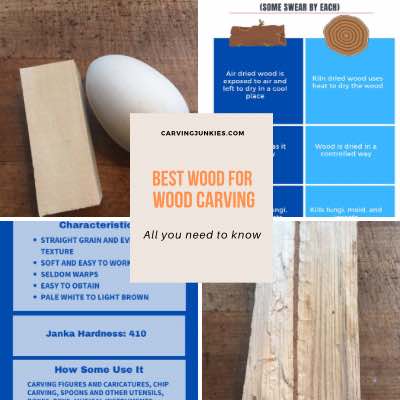- Home
- How to hand carve wood
- Best wood for wood carving
The best wood for wood carving?
Here are all the types and what they are best used for.
What is the best wood for wood carving? You can carve any type of wood, but that doesn’t mean that you will enjoy it.
A lot depends on what type of carver you are. If you are carving by hand, you want wood that is soft and cuts easily, does not peel or chip, and will hold paint (or stain) well.
If you are using power tools, the best wood for wood carving will be something that is harder.
Considerations for choosing the best wood for wood carving
For small carvings, you should know that a highly grained wood may overpower your carving details. Personally we like highly grained wood.
Harder woods will dull your tools faster, which means you will need to strop and sharpen them more often. You may also need to make smaller cuts.
Woods that have blemishes that will affect your carving and design (such as knots) and will not be the best wood for wood carving.
 Backyard wood isn't always ideal for carving
Backyard wood isn't always ideal for carvingThe best wood for wood carving by hand is easy to cut
Balsa wood is super soft and easy to carve, but it crumbles easily. If you are making a model airplane it might work just fine. If you are carving a detailed caricature, you will probably become frustrated pretty quickly. So it may not be the best wood for wood carving.
Some say that wet or green wood is the best wood for wood carving. While it may be easier to carve, it often cracks as it dries.
Our rule of thumb is to start with basswood to build your carving skills for figures, caricatures, and chip carving. Then try some other wood and see if you like the results.
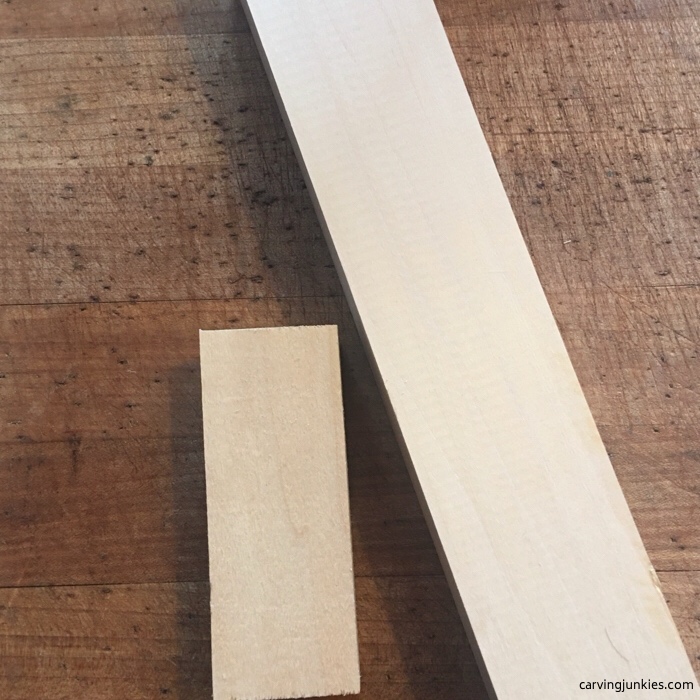 Basswood from different suppliers
Basswood from different suppliersBest wood for wood carving properties at a glance
The table below will give you an idea of different types of wood and how some carvers are using them. We’ve also included the Janka hardness test scores to give you an idea of the difference between various timber species.
Note: Bear in mind that the Janka test measures resistance to denting and wear. It does not reflect how difficult a wood is to carve.
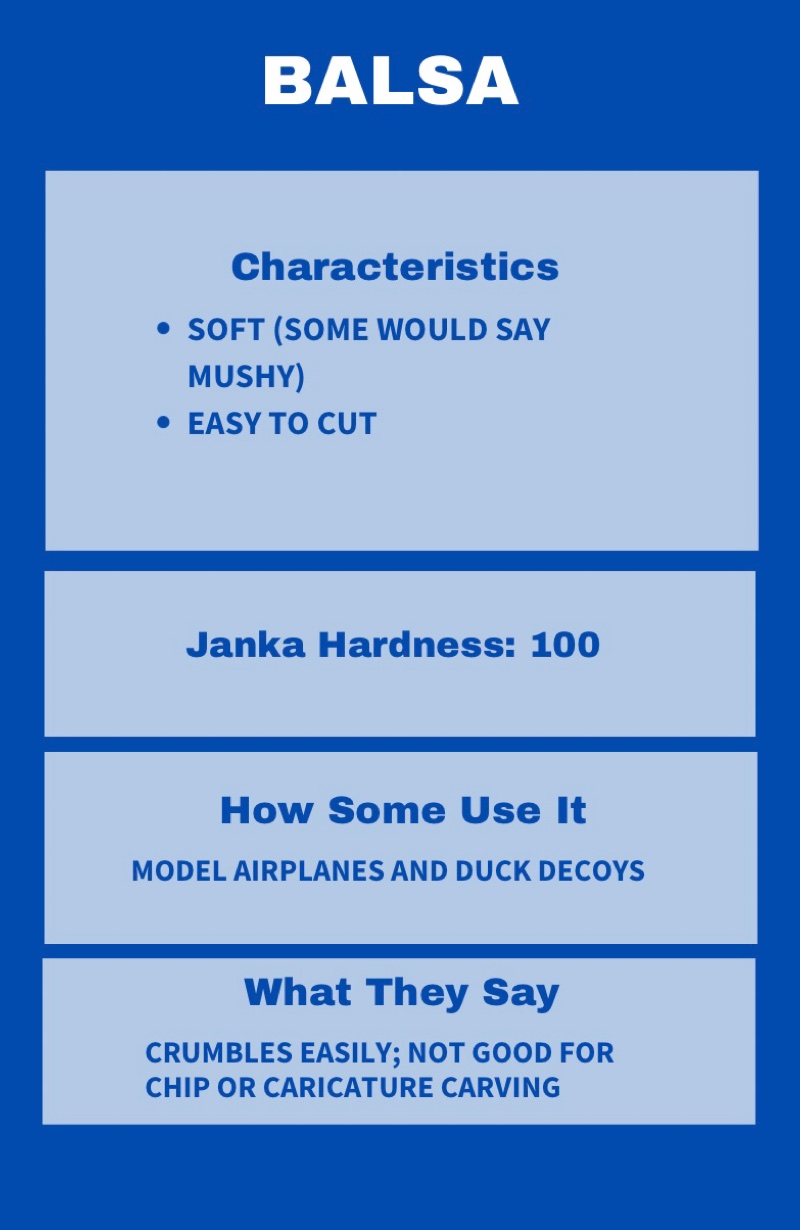
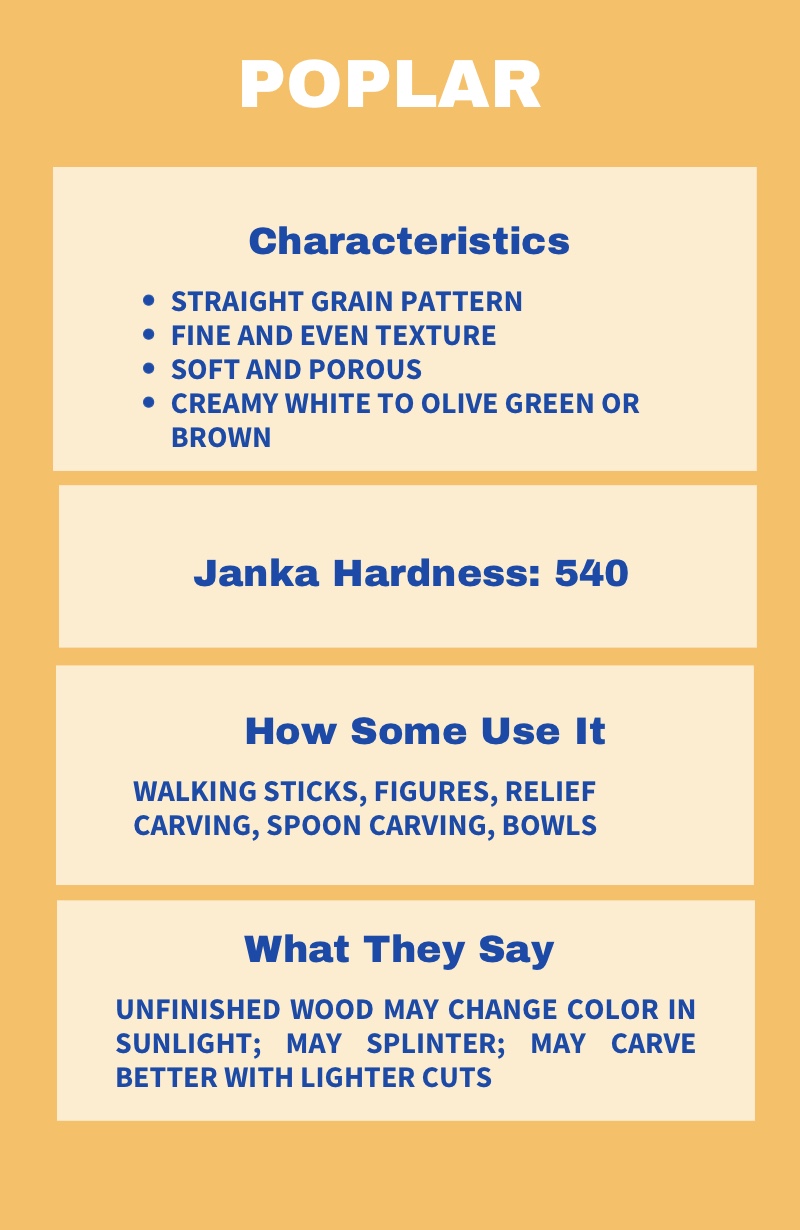


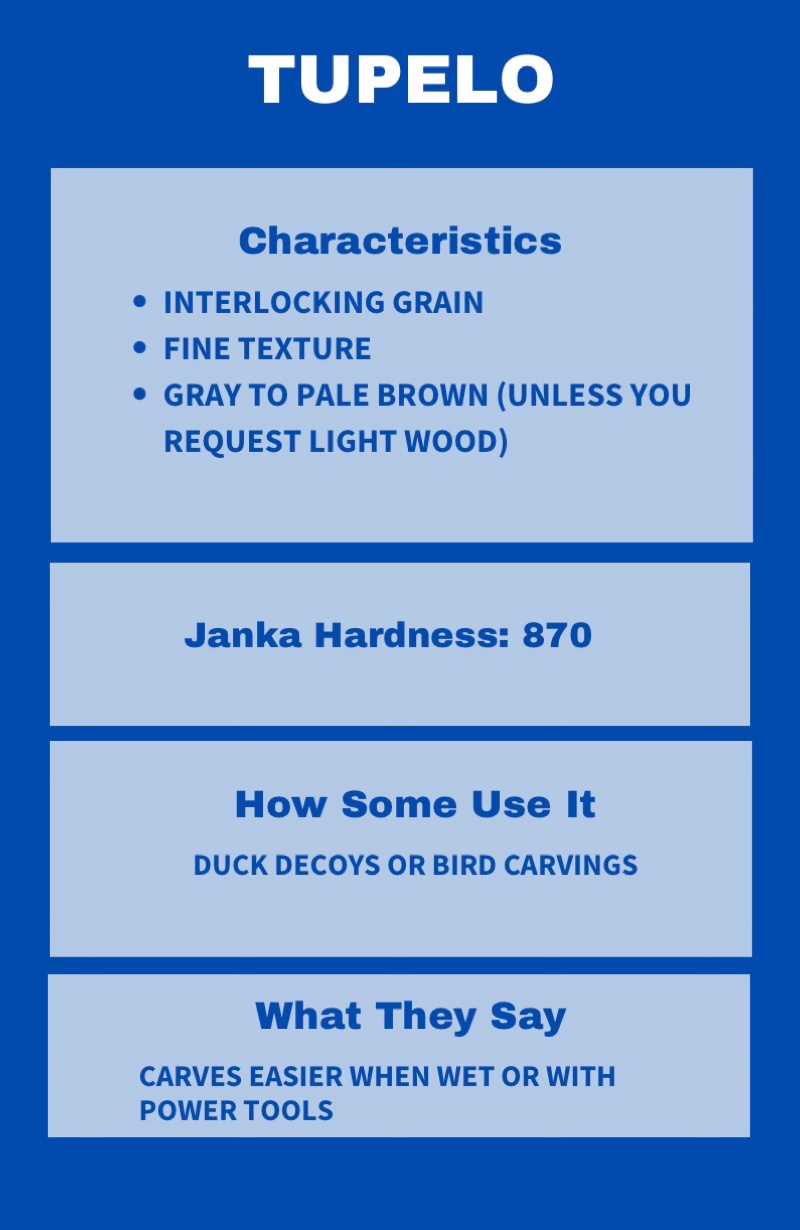

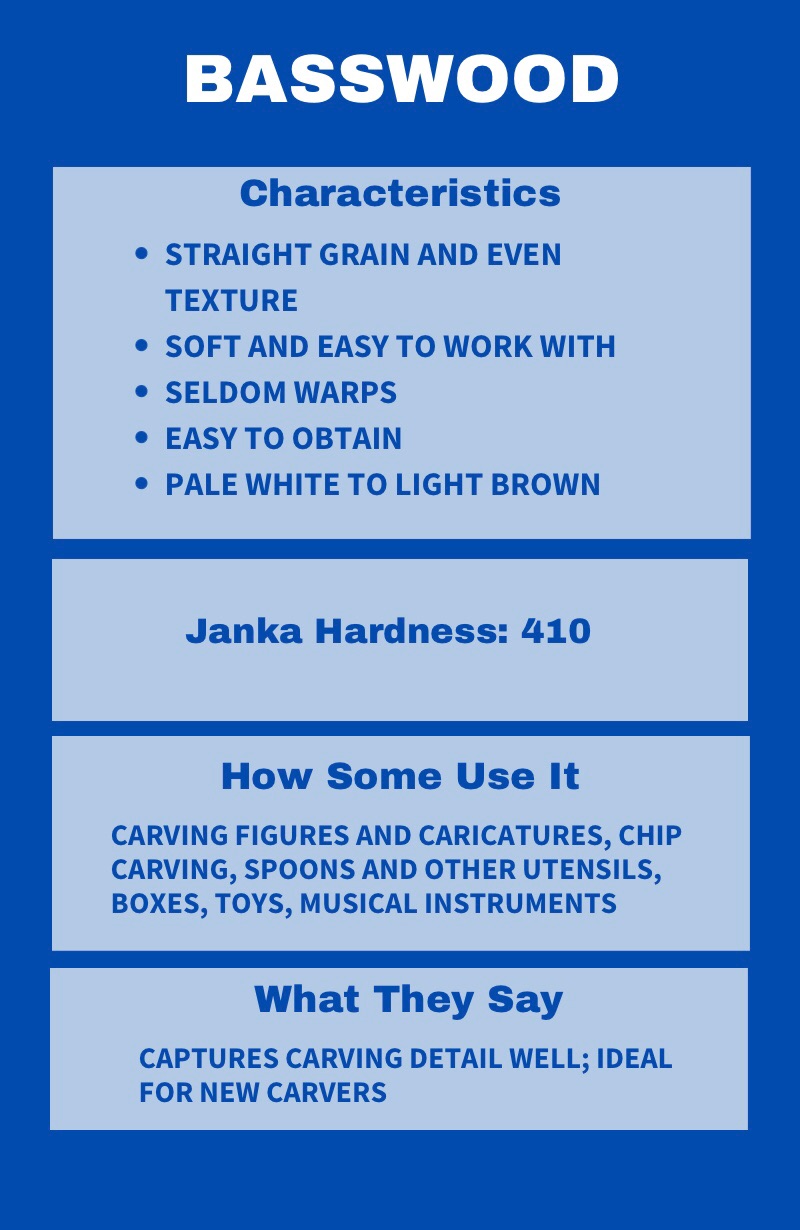
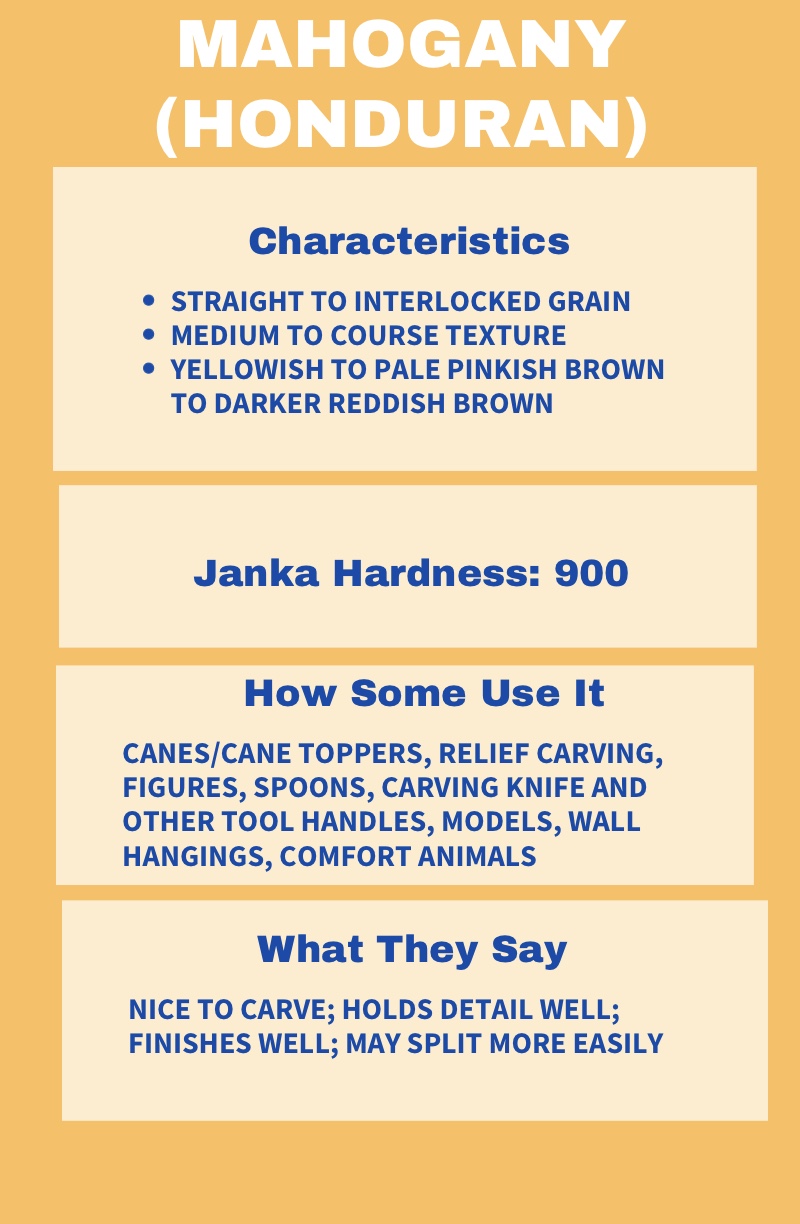







Kiln dried vs air dried wood: Which is the best wood for wood carving?
The purpose of drying wood is to reduce the moisture content.
What method of drying wood provides the best wood for wood carving?
The chart below tells you how kiln dried wood compares with air dried wood.
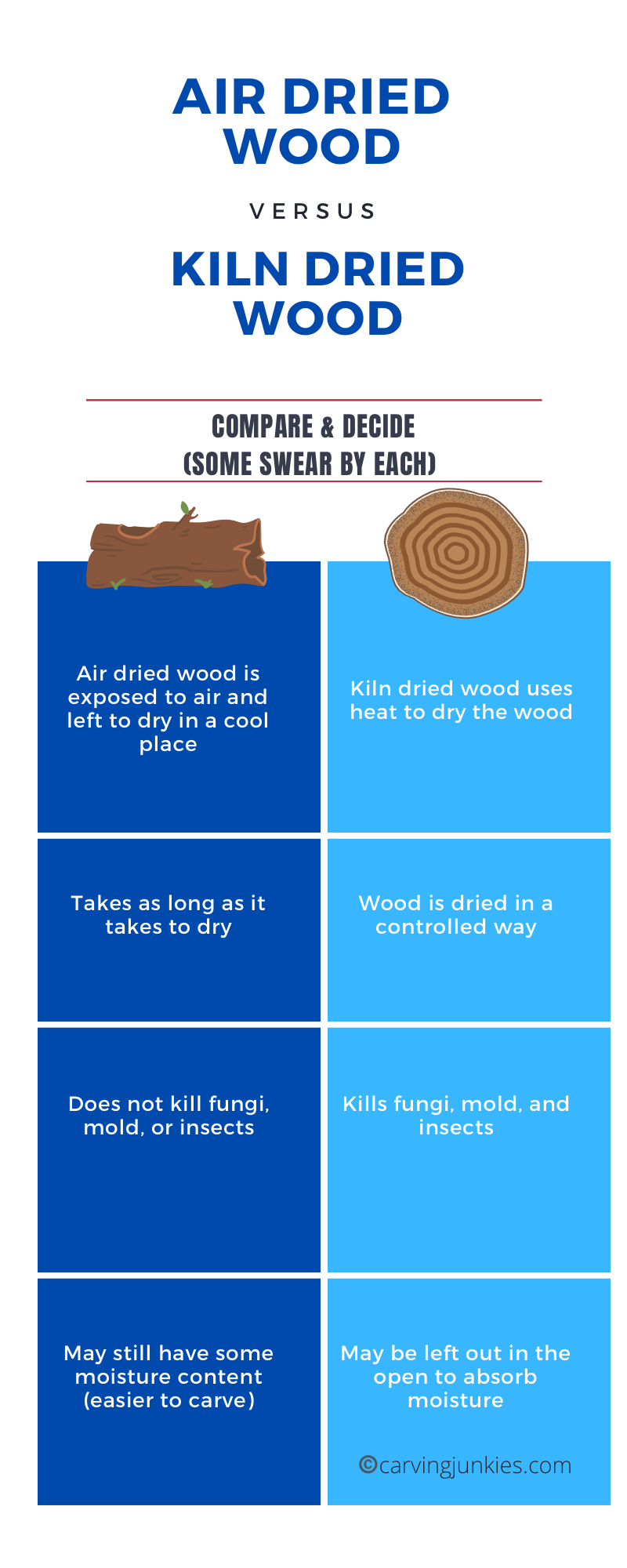
What we think is the best wood for wood carving
In our experience, the best wood for wood carving comes from a mill that uses a mixture of both methods—first air drying and then finishing in a solar kiln—to provide easy-to-carve basswood blocks.
We feel this hybrid-dried wood is the best of both worlds!
 Some suppliers will cut wood down or provide different shapes
Some suppliers will cut wood down or provide different shapesIs craft store basswood the best wood for wood carving?
Craft store basswood is far from the best wood for wood carving. It is usually poor in quality and you will not get clean carving results.
If you are just starting out, you can certainly buy a little to see if you like carving. Then invest in some wood from a better wood source.
It will make your carving much more fun.
Know that some basswood suppliers will only provide long blocks of basswood in various widths. You may have to cut the wood down to smaller-sized blocks.
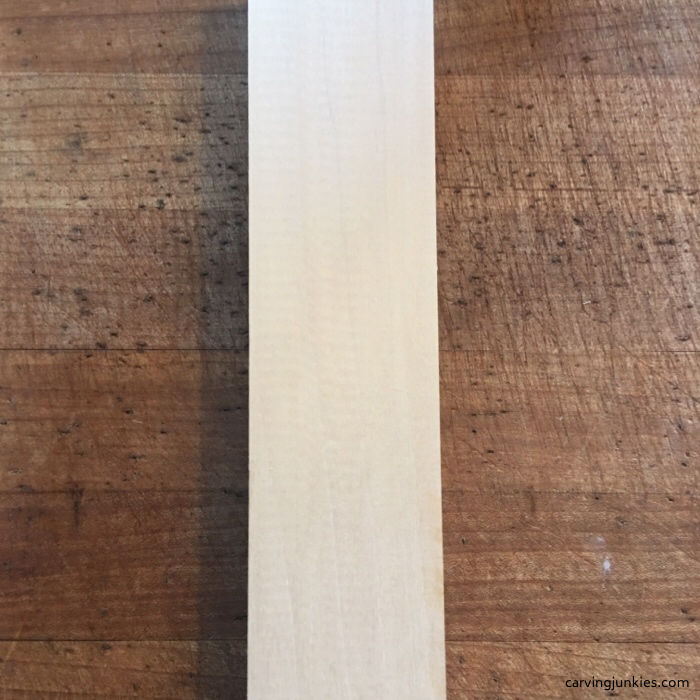 Some suppliers only provide long blanks
Some suppliers only provide long blanksAvoiding allergies, toxins, and odors
There is nothing worse than getting a skin rash from the wood you are carving. This website provides a database of wood types and includes known health risks.
Certain types may not be the best wood for wood carving spoons or other kitchen utensils because it is toxic to humans.
For example, cedar is a beautiful wood but some species (e.g., Australian Red Center) can cause stomach cramps. This database provides common reactions, areas affected, and potency of many species of wood.
Speaking of cedar, it has a strong odor that may not appeal to everyone. Check the databases above to learn more about wood and odors. Basswood generally does not have an offensive odor.
 Cedar is colorful and aromatic
Cedar is colorful and aromaticTips for storing basswood to keep it the best wood for wood carving
As basswood ages, it can become tight and hard to carve, especially if you do not store it properly.
If you are buying your wood in bulk, keep it in a place where the temperature and humidity are stable.
Some carvers wrap basswood in saran wrap or place it in closed plastic containers.
We store our basswood in a cool, dry place (away from heat and air conditioning) inside Ziploc bags. We check the bags often to be sure they are not gathering too much moisture or getting moldy.
Others keep their basswood on shelves in their shops or basements. If you do, avoid direct sunlight.
Wood too dry?
If your wood is dry and hard to carve, first check that your knives are super sharp.
If the wood is still challenging to carve after sharpening, try storing it outdoors in a sunny place inside a closed plastic container, along with a sponge that is damp (or a bowl of water). Leave it for a day or two.
Some carvers spray dry wood with a mixture of 50% water and 50% isopropyl alcohol to rehydrate it.
You can also store the wood in a damp area of your home and see if that helps.
Wood too wet?
Wood that you collect from outdoors may have a high moisture content and will need to be stored outdoors until it loses some moisture.
Keep it off the ground so air can circulate. Also avoid covering it tightly with a tarp or covering.
What moisture level is "just right" to be the best wood for wood carving?
Moisture content in wood is a delicate balance. The ideal moisture content of the best wood for wood carving is 10% to 12%. Unless you have a moisture content meter, however, it is hard to determine the exact moisture content of your wood.
Want to know more about moisture content in wood? Read this scientific article.
Best wood for wood carving summary
- There are many different types of wood you can carve
- The best wood for wood carving may be a matter of personal choice
- Basswood is ideal for those who are new to wood carving
- As your skills improve, you can try other types of wood
- The best wood for wood carving is wood that works best for you
Sources:Bell Forest Products, Inc.; Hardwood Distributors; Woodcraft; Woodworking Network; The Wood Database; and Chippingaway.com
Get 50 Wood Carving & Painting Tips when you join our FREE Covered in Chips club.
Share this page
carvingjunkies.com never sells your personal information.
This site uses cookies for its operation and to enhance your experience. As an Amazon Associate and Focuser Carving affiliate we earn from qualifying purchases.
Home | About Us | Privacy Policy | Terms of Use | Contact | Sitemap
